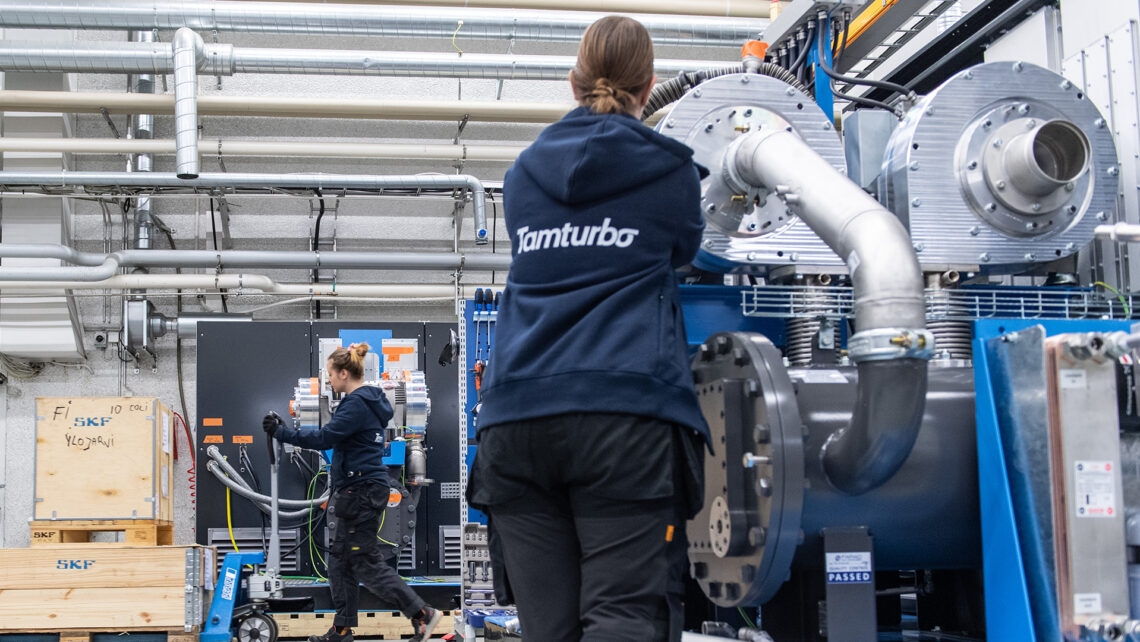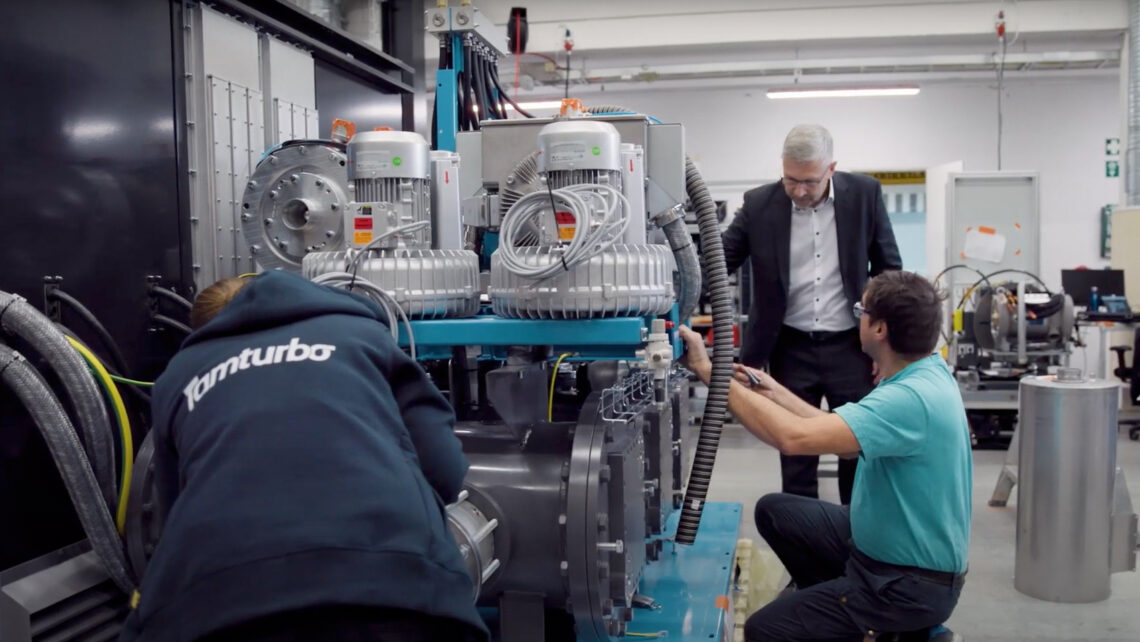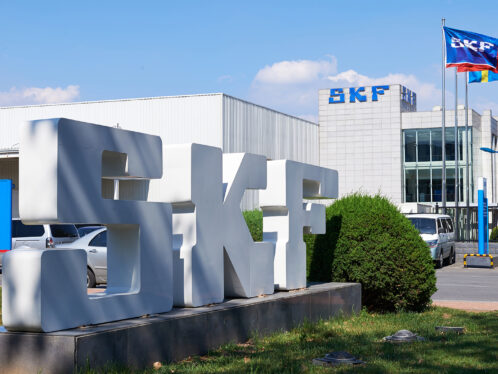
Welcome to the clean air zone
Finnish company Tamturbo is on a mission to boost the efficiency of industrial compressed air systems.
Psst… did you hear the uncomfortable truth about compressed air? “Only 12 to 15 percent of the total energy supplied to an air compressor is converted into compression of the air,” says Igor Nagaev, CEO of Finnish compressor maker Tamturbo. “The rest is usually wasted.” In the past, companies might have been able to ignore those low low-efficiency figures, since the simplicity, convenience and reliability of pneumatic power easily outweighed the high energy bills. That’s no longer the case.
Today, as more manufacturers set ambitious targets for the reduction of CO2 emissions, energy-intensive equipment is coming under increasing scrutiny. And in many facilities, air compressors are among the most energy-hungry assets on site. Tamturbo, established in 2010 in the city of Tampere in western Finland, offers users a more efficient alternative.
The company’s products are designed with a focus on economy, simplicity and reliability. At their heart is a design concept that requires fewer components than conventional compressors and operates with zero mechanical friction. Most compressors squeeze the air using scrolls, pistons or vanes. They get their power from large electric motors, often connected via a reduction gearbox. With so many components, they need sophisticated lubrication systems to minimize friction and reduce the inevitable wear.
Turbo compressors, in contrast, use a single moving part, a rapidly rotating turbine that accelerates the incoming air. The turbine spins without contacting the compressor housing, and the high operating speed means it can be connected directly to a motor with no intermediate gearing.
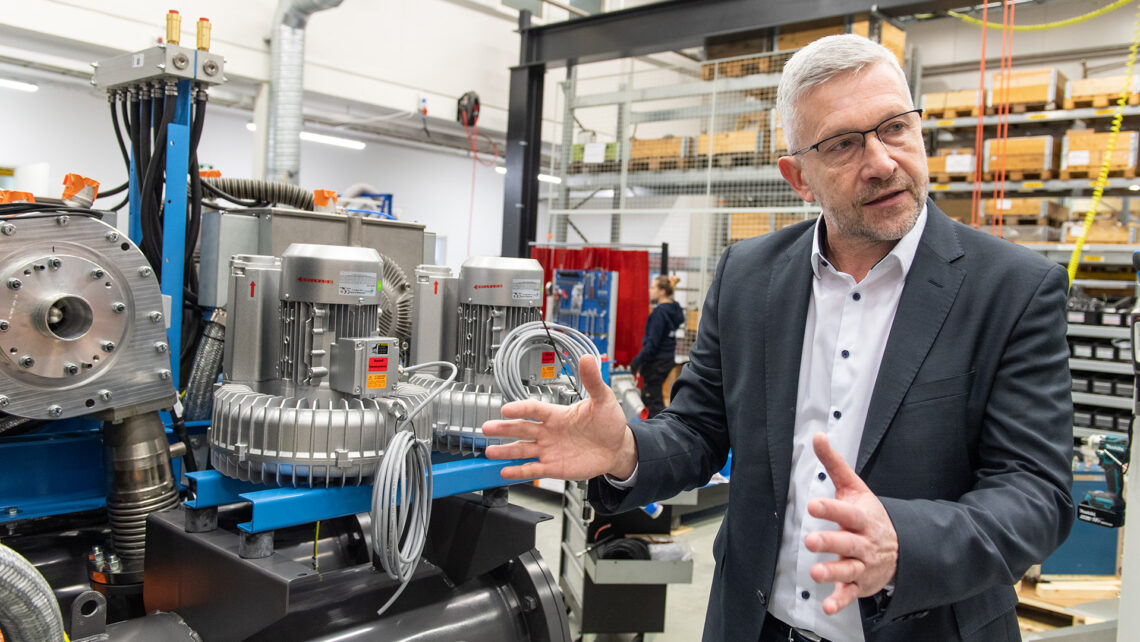
Floating on air
Tamturbo products have one further trick up their sleeve. Instead of conventional rolling element bearings, their motors spin on active magnetic bearings, which support the rotor, shaft and turbine using magnetic levitation, eliminating metal-to-metal contact altogether.
Our teams work extremely closely together, constantly, consistently and very precisely focused on superior efficiency as a final result.
Igor Nagaev, CEO, Tamturbo
The contactless design dramatically reduces friction and wear in the compressors, and thus Tamturbo compressors require no oil – “not a single drop,” says Nagaev. That brings multiple benefits, he explains. It simplifies maintenance, eliminating the need to monitor and manage a complex lubrication system, the cost of periodic oil changes and the environmental burden created by disposing of used oil. The oil-free design also means that no lubricant traces enter the compressed air distribution system. That can be a critical benefit in applications such as food and beverage production, where users need to guard against product contamination.
Tamturbo’s high-speed electric motor with magnetic bearing technology comes from SKF, and the two companies have worked together from the beginning to integrate active magnetic bearings into the novel compressor design. It is a collaboration, says Nagaev, that goes well beyond the typical relationship between machinery maker and supplier. “It really is co-working,” he says. “Our teams work extremely closely together, constantly, consistently and very precisely focused on superior efficiency as a final result.
“The SKF motors and magnetic bearings give us a big advantage,” he continues, “because they are extremely reliable. We have this simple, robust component inside the compressor, but the technology can also help us to offer significant additional value to our customers.”
One such value, he explains, comes from the use of data from the magnetic bearing control system to provide insights into machine condition and reliability. Because the active magnetic bearing is continually working to maintain the position of the rotor shaft, it can detect vibration that could be an indicator of turbine malfunction or other problems. The two companies are currently collaborating on the development of a “digital twin” that will give Tamturbo or its customers a detailed, real-time picture of compressor health and performance.
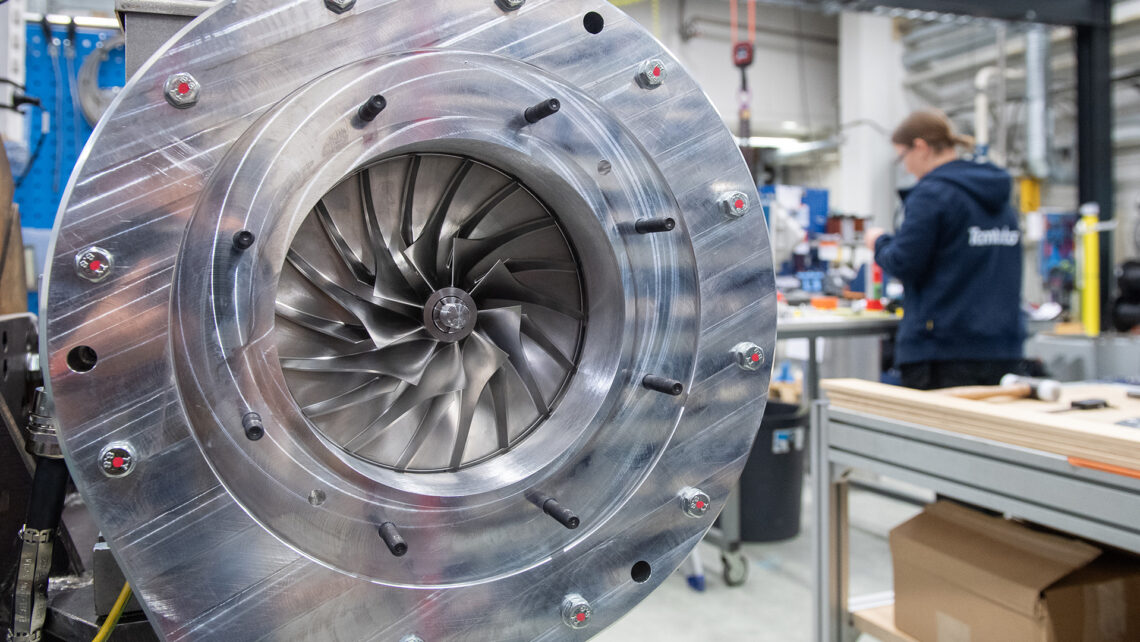
Towards zero waste
“Advanced digital technologies are a key avenue of development for the company, but efficiency and sustainability remain central to Tamturbo’s plans,” says Nagaev. The company is working closely with SKF on new developments, such as higher speed motors, that will help it eke out more useful compressed air from every kilowatt of electricity.
It is also helping customers change the way compressors are integrated into their production operations. “When you compress air, you heat it up,” explains Nagaev. “That’s where most of the energy used to run the compressor goes, but most companies don’t do anything with the heat.”
To eliminate that source of waste, Tamturbo can equip its machines with energy recovery devices, which can use excess heat from the compressor to heat water or other process liquids to temperatures of up to 90 ºC. It is currently working to extend the new “boost heat recovery” option to every product in its range.
With record energy prices adding extra impetus to the efficiency agenda, it is an idea whose time has come. “The response from the market has been extremely positive,” says Nagaev. “Already about half the compressors we sell are equipped with energy-recovery systems, and we expect that number to rise.”
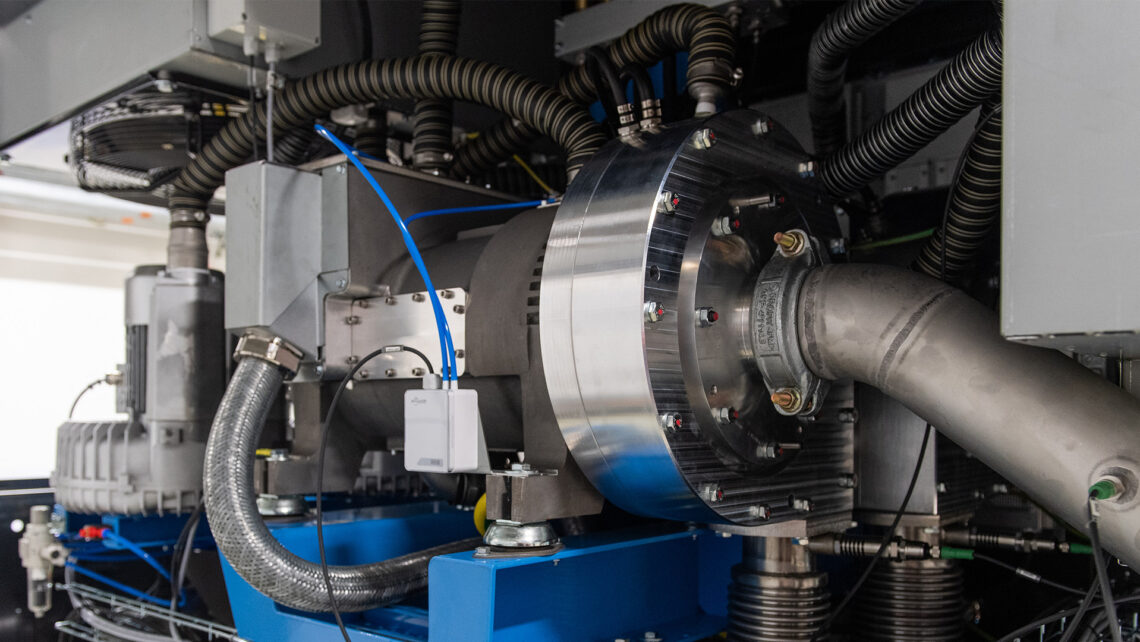
Complete motor
assemblies from SKF
SKF supplies complete motor assemblies to Tamturbo in two sizes: 150 kW for larger compressors and 75 kW for smaller units. The assemblies include a high-speed permanent magnet motor capable of operating at 35,000 r/min and three active magnetic bearings (two radial and one axial).
A separate magnetic bearing control cabinet contains circuitry that tracks and registers rotor position up to 15,000 times a second. It continually adjusts the power sent to the electromagnets in the bearings to keep the rotor spinning precisely in the centre of the motor.
In a finished compressor, each motor is equipped with one or two compression turbines, depending on the pressures and volumes required by the end-user application.
